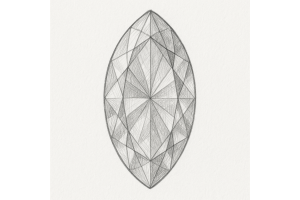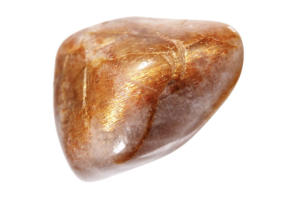GBP
/
GBP
/
Shipping to:
Currency:
Amethyst vs Citrine: Key Differences Between These Stunning Quartz Gemstones
Amethyst and citrine are two captivating gemstones that, while both belonging to the quartz family, exhibit distinct characteristics that set them apart.
Understanding these differences is essential for collectors, jewellery enthusiasts, and those intrigued by the unique properties of gemstones.
Amethyst: The Alluring Purple Quartz
Amethyst is celebrated for its enchanting purple hues, which can range from delicate lilac to deep violet.
This striking coloration is primarily due to the presence of iron impurities and natural irradiation during the stone's formation.
Historically, amethyst has been cherished since ancient times, often associated with royalty and believed to possess protective and calming energies.
For those drawn to the serene beauty of amethyst, consider exploring gemstone engagement rings that feature this mesmerising stone.
Citrine: The Radiant Yellow Quartz
Citrine, in contrast, radiates warm shades from pale yellow to rich amber.
Its name is derived from the French word 'citron,' meaning lemon, aptly reflecting its sunny appearance.
Natural citrine is relatively rare; most citrine available today is produced by heat-treating amethyst or smoky quartz, a process that enhances its yellow tones.
This gemstone is often linked to prosperity and positive energy, earning it the nickname "merchant's stone."
If you're captivated by the golden glow of citrine, you might want to explore gemstone rings that showcase this vibrant gem.
Distinguishing Between Amethyst and Citrine
While colour is the most apparent difference—amethyst's purples versus citrine's yellows—there are other factors to consider:
Formation Process
Natural citrine is less common, and much of the citrine on the market is heat-treated amethyst.
This treatment alters the stone's colour from purple to yellow or orange.
Physical Properties
Both stones share a similar chemical composition as quartz varieties, but their coloration results from different trace elements and treatments.
Market Availability
Due to the rarity of natural citrine, heat-treated amethyst is more prevalent in the market.
For a deeper understanding of gemstone formation and differences, check out this insightful article.
Metaphysical Properties and Symbolism
In metaphysical circles, amethyst is revered for its purported abilities to promote clarity, calmness, and spiritual insight.
It's often used in meditation practices and is believed to aid in relieving stress.
Citrine, conversely, is associated with abundance, joy, and energy.
It's thought to inspire confidence and attract prosperity, making it a popular choice for those seeking to manifest success.
If you're considering a unique engagement ring that embodies these qualities, you might explore non-traditional engagement rings featuring these gemstones.
Caring for Amethyst and Citrine Jewellery
Both gemstones rank 7 on the Mohs hardness scale, indicating good durability for everyday wear.
However, to maintain their beauty:
Cleaning
Use mild soap and warm water with a soft brush.
Avoid harsh chemicals that could damage the stones.
Storage
Store separately to prevent scratches from harder materials.
Exposure
Limit prolonged exposure to direct sunlight, as both stones can fade over time.
For more tips on maintaining your gemstone jewellery, consider reading this comprehensive guide.
Frequently Asked Questions
Is heat-treated citrine less valuable than natural citrine?
Natural citrine is rarer and often more valued by collectors.
However, heat-treated citrine remains popular and offers an affordable alternative with similar aesthetic appeal.
Can amethyst change colour naturally over time?
Amethyst is generally stable, but prolonged exposure to strong sunlight can cause its colour to fade.
How can I tell if my citrine is natural or heat-treated?
Natural citrine tends to have a pale yellow to smoky colour, while heat-treated amethyst often exhibits a more intense orange or reddish hue.
Consulting with a gemologist can provide a definitive assessment.








